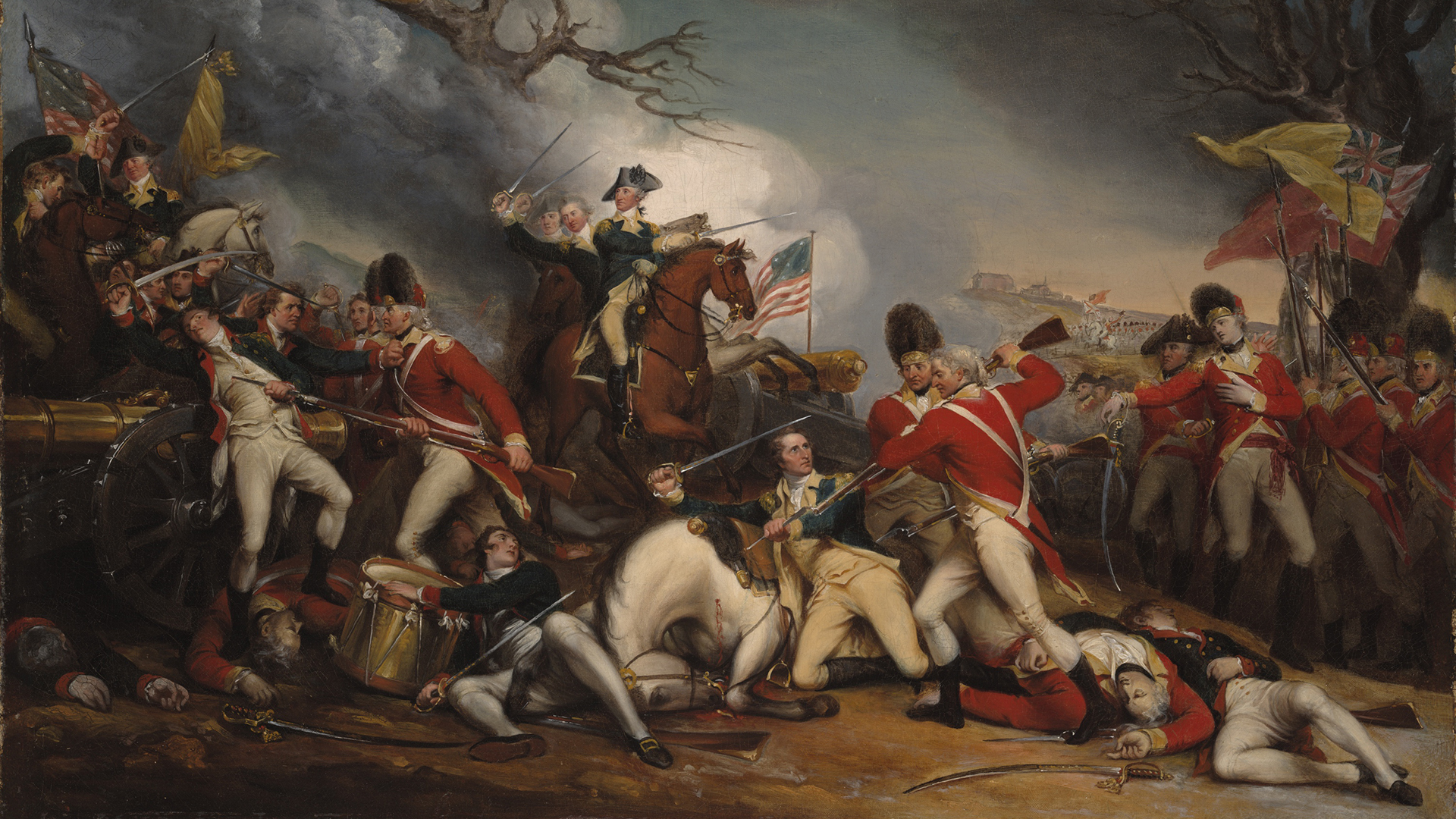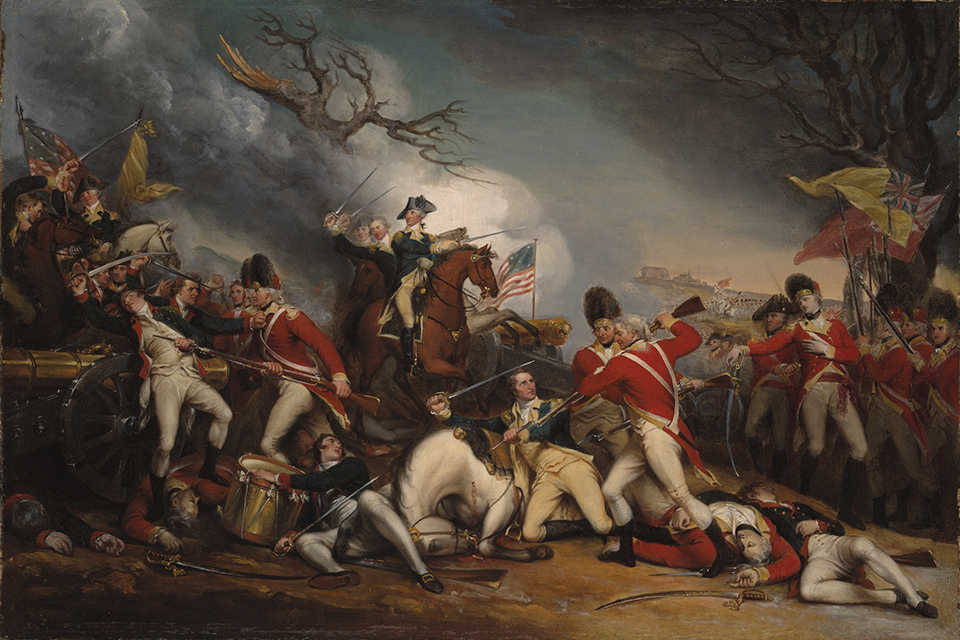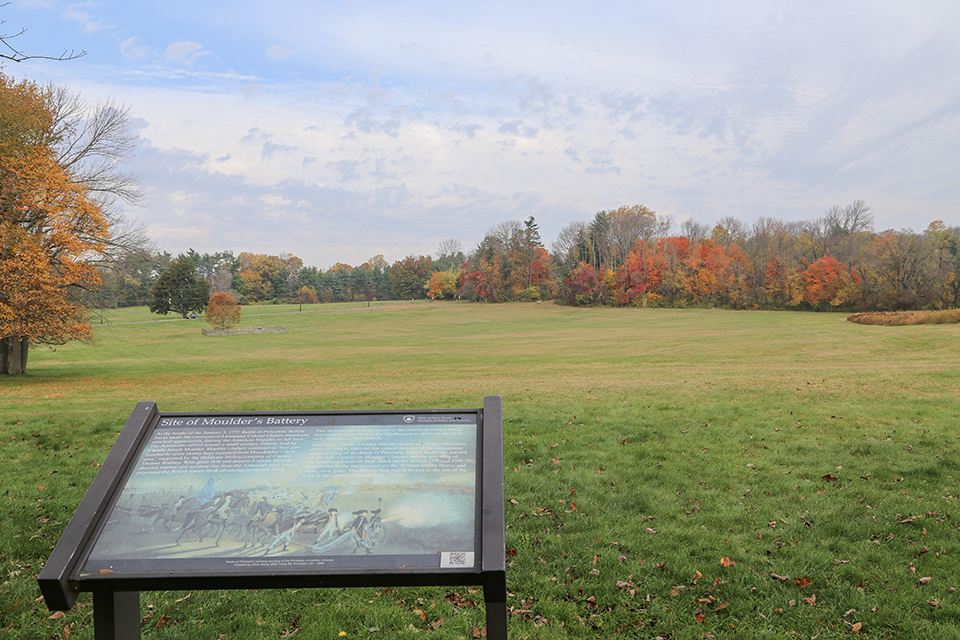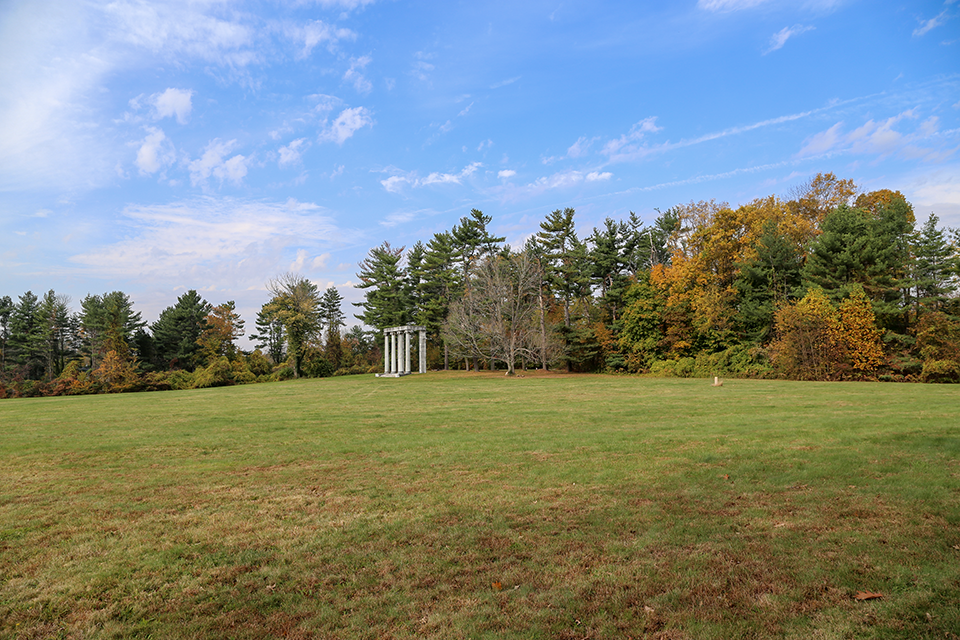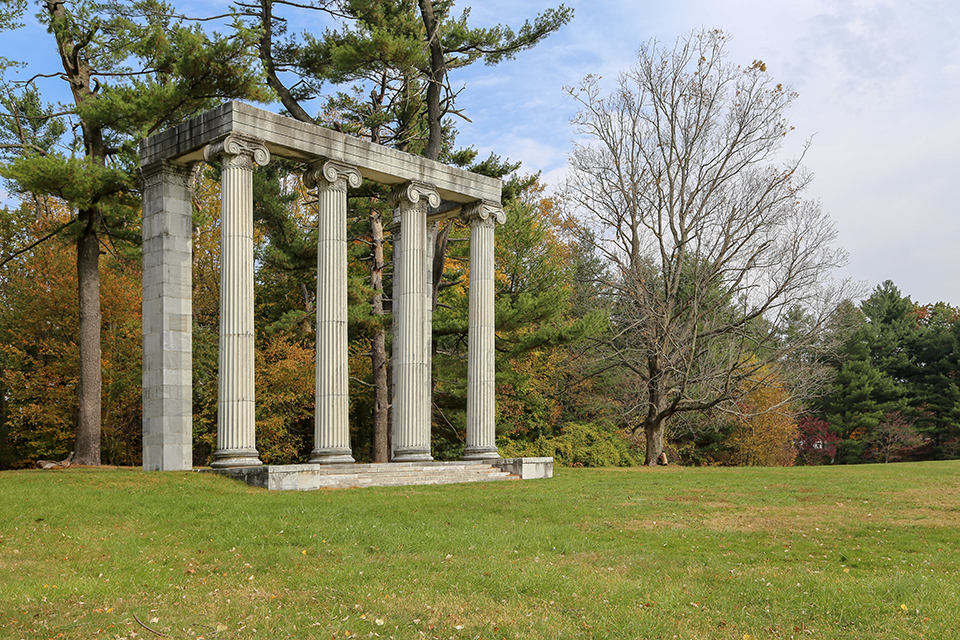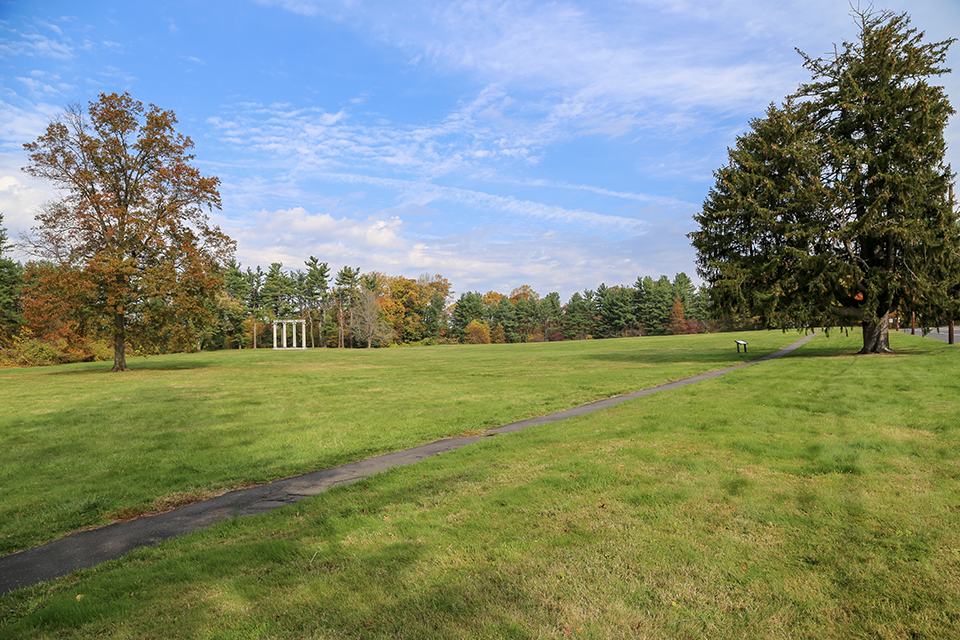This Revolutionary War-era battlefield is where troops under General George Washington routed British Regulars on January 3, 1777, ending a ten-day campaign that began with Washington’s crossing of the Delaware and turned the tide in the war for American independence. The battle occurred in central New Jersey amidst farms, cultivated fields, and orchards, just southwest of what was then the village of Princeton. In 1946 the Princeton Battlefield State Park was established on roughly 40 acres and included the historic Thomas Clarke House (built in 1772), where General Hugh Mercer died of wounds inflicted during the battle. In 1976 some 35 acres were added to the park and the Clarke House opened as a museum, with five more acres added to the north in 2015.
Background
The state park is bisected by Mercer Road, built in 1807. On the north side of the park, an Ionic colonnade designed by Thomas U. Walter in 1836 (originally as the façade of a Philadelphia residence, but later incorporated into the nearby Mercer Manor) marks the gravesites of British and American troops. In 1966 Princeton Battlefield State Park was listed in the National Register of Historic Places and designated a National Historic Landmark. The National Register designation was expanded to the Princeton Battlefield-Stony Brook Village Historic District in 1989, which includes the park, and encompasses some 2,850 acres.
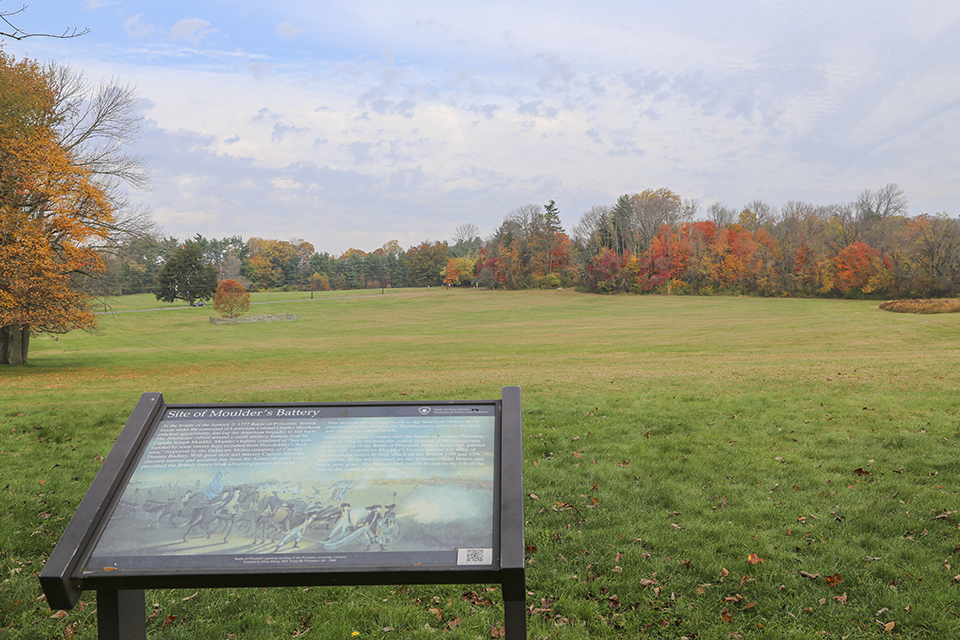 Princeton Battlefield, Princeton, NJ, 2014. Photo courtesy The Civil War Trust.
Princeton Battlefield, Princeton, NJ, 2014. Photo courtesy The Civil War Trust.
To the east of and adjacent to the park lies the 22-acre parcel known as Maxwell’s Field, which was a site of heavy fighting in January 1777. Its topographic landscape as it appeared then is clearly visible. Still largely an open field, the land is level or slightly rolling, with gentle slopes tending towards the south, while the southern portion of the landscape is wooded. The entire property is surrounded by a thin line of trees and brush. The historical authenticity of this battleground has long been supported by archaeologists, historians, and preservationists.
Since 2003 The Institute for Advanced Study (IAS), which owned Maxwell’s Field, actively pursued plans to develop the site. In 2012 it put forth a plan to build eight townhouses and seven detached homes for faculty on Maxwell’s Field, which led to the National Trust for Historic Preservation placing it on its 2012 “11 Most Endangered Places” list.
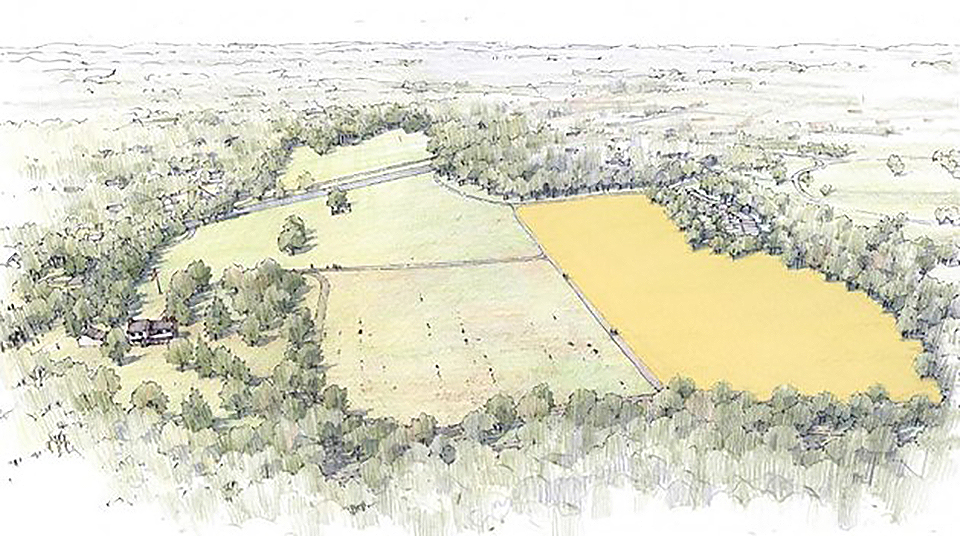
Preservation vision for Princeton Battlefield, including 14.85 acres at the site of Washington’s Charge (seen in yellow), Princeton Battlefield, Princeton, N.J. Image courtesy American Battlefield Trust.
Advocacy and Engagement
TCLF enrolled the battlefield in its Landslide program of at-risk landscapes in December 2015, soon after the IAS began clearing the field with heavy equipment in preparation for building the faculty housing units. The following year TCLF joined a coalition of nine organizations, including the American Association for State and Local History, the American Revolution Institute of the Society of the Cincinnati, the Civil War Trust (Campaign 1776), the National Coalition for History, the National Trust for Historic Preservation, the Princeton Battlefield Society, the New Jersey Chapter of the Sierra Club, and the National Parks Conservation Association. On March 1, 2016, as reported in the Associated Press and several other media outlets, the Coalition issued a joint letter to the chairman of the Board of Trustees of IAS, urging them to cease their building plans. The Civil War Trust put forth a standing offer to purchase the historic parcel for $4.5 million, reportedly more than $1 million above the land’s appraised value.
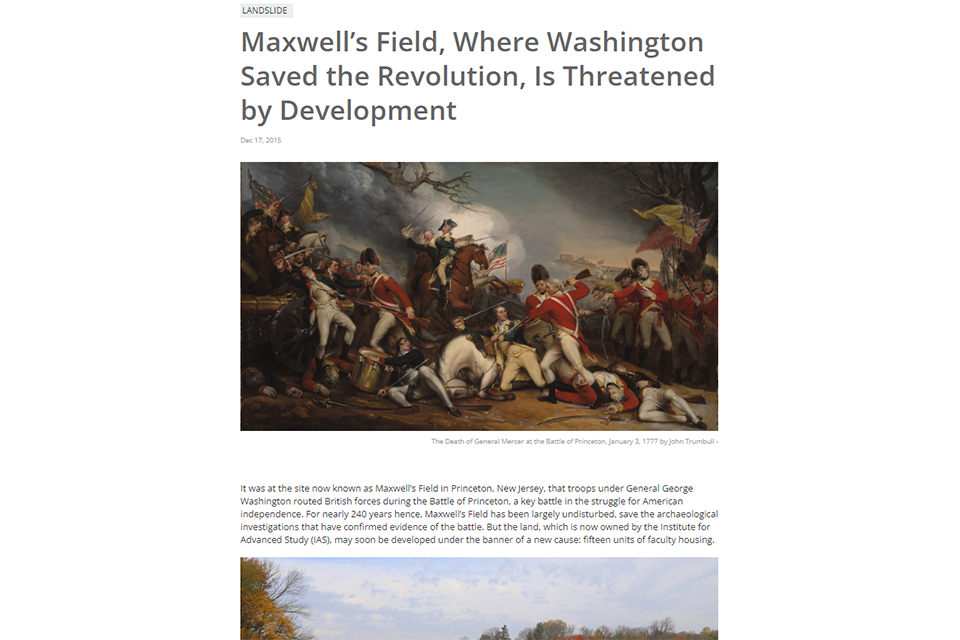 Landslide Announcement for Princeton Battlefield, Princeton, N.J., 2015. Image courtesy The Cultural Landscape Foundation.
Landslide Announcement for Princeton Battlefield, Princeton, N.J., 2015. Image courtesy The Cultural Landscape Foundation.
A breakthrough was achieved in December 2016 when the IAS agreed to sell 14.85 acres of land to the Civil War Trust for $4 million, with the land to be conveyed to the State of New Jersey as an addition to the existing Princeton Battlefield State Park. The planned acquisition included approximately two-thirds of Maxwell’s Field and a 1.12-acre parcel north of the property that had been identified by historians as part of the battlefield. The sale was finalized in 2018, representing a landmark deal to save the historically significant battlefield landscape.
In 2022 Governor Murphy announced an investment of $25 million to upgrade ten Revolutionary War sites across New Jersey, including Princeton Battlefield State Park; in 2023 state Senator Andrew Zwicker announced that he would lead the charge to pass a budget resolution which will direct $1.5 million in state funds to interpret and restore Princeton Battlefield State Park. The interpretive experience will include wayfinding signage as well as programs for visitors to fully envision the battlefield as it appeared in 1777.
Selected Resources
“TCLF Joins Coalition to Save Princeton Battlefield,” March 15, 2016
“An Intact Princeton Battlefield Is Within Reach,” November 20, 2017
“Princeton Battlefield: SAVED!,” June 8, 2018
Selected Media Coverage
“Skirmishes Continue; Coalition Urges Halt to Housing Project,” Town Topics, March 9, 2016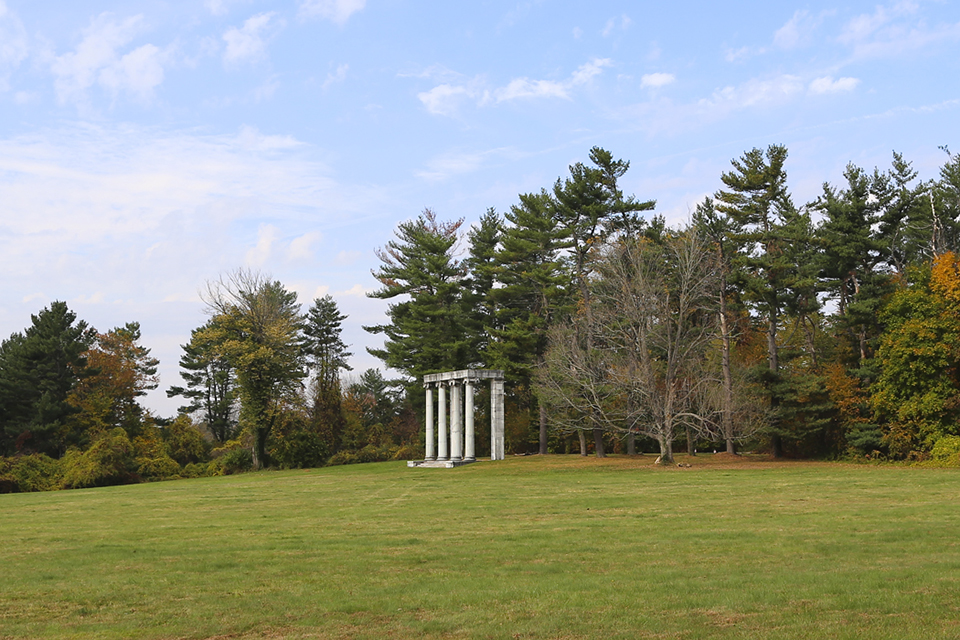
-
Princeton Battlefield, Princeton, NJ, 2014. Photo courtesy Civil War Trust.
